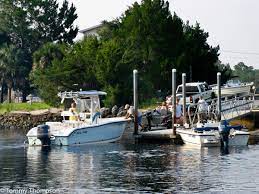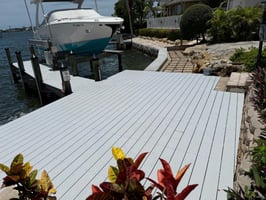We have compiled a list of fun things to do while boating.
- View the Scenery
Another everyday boat...
What You Need To Know
Whether an experienced boater or a first-time captain, driving a boat at night presents its unique set of challenges. Even if you’re familiar with your vessel and its surroundings, daylight is not always enough to see obstacles and other hazards. To reduce the risk of accidents and ensure a safe trip, following some best practices when driving a boat at night is essential. While it might seem unusual to do in the daylight, preparing for driving a boat at night before you leave the dock is advisable. Here are some tips that can help you travel safely.
Check the visibility
When driving a boat at night, the best way to check the visibility is to do a shoreline inspection. You’ll want to get as close to the shore and shallow water as possible. This way, you’ll be able to see any obstructions or hazards in your path. If you’re on a coastal cruise, you may want to contact the authorities and inquire about any ship or ferry traffic in the area. Similarly, you should also check for any nearby vessels, as they may be a hazard. If you’re in a large vessel on a river, you’ll want to be extra vigilant, as you might not be able to see other vessels.
Set up adequate lighting and spotlights

While driving a boat at night, it’s imperative to have adequate lighting and spotlights. This will ensure that other vessels can see you and help prevent accidents. Similarly, it will help you navigate through the area with ease. As such, it’s advised to use white lights on both the port and starboard sides of the vessel. You can also add yellow lights to the top of the mast for added visibility. Similarly, it’s vital to have red lights on the stern to indicate that you’re traveling in the rear. To further increase visibility and improve the vessel’s appearance, you may want to consider buying a fog light.
Stay on course
When driving a boat at night, staying on course is crucial. This will minimize the risk of straying away from the vessel's route and getting lost. You can use GPS navigation or a digital compass to assist with this. You can also navigate with the help of a shoreline inspection. If sailing in foggy conditions, you may consider setting a compass course that will take you through clear waters. Similarly, if there are other vessels in your vicinity, you may want to set a course that will keep you at an appropriate distance from them.
Maintain an adequate speed
When driving a boat at night, it’s essential to maintain an adequate speed. This will allow you to stop quickly in an emergency and help prevent accidents. If you’re unsure of the appropriate speed, you can follow these rules of thumb:
* For sails - 10 knots * For outboard or inboard motors - 5 knots * For paddlewheel or stern drive motors - 3 knots Similarly, if you’re traveling with a passenger, it’s essential to consider their comfort.
You can slow down or change course as necessary to reduce the risk of motion sickness.
Additional Tips
When driving a boat at night, keeping your crew informed is essential. This will help minimize confusion and make everyone aware of their surroundings. Similarly, you should always let other vessels know about your presence before it’s too late. This can be done by using the horn and flashing lights. Additionally, ensure that all your equipment is in working order before leaving the dock. This will help you navigate the area and safely get back to shore. If you follow these tips, you’ll be well-prepared to drive a boat at night. It may differ from driving during the day, but it’s essential to be prepared for any situation. With these tips, you’ll be able to navigate the water safely so you can get to your destination quickly and easily.
We hope you found this information helpful. If you have any questions or are looking for more information, or would like to schedule a free estimate, contact the professionals at Precision Marine Construction at 941.924.6044 regarding all your marine needs.,

We have compiled a list of fun things to do while boating.
Another everyday boat...

Whether you've been boating for a while or just starting, boating etiquette is a crucial skill....

Blog comments